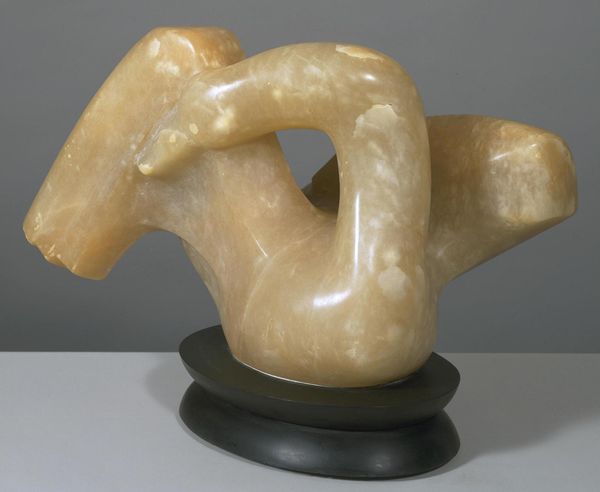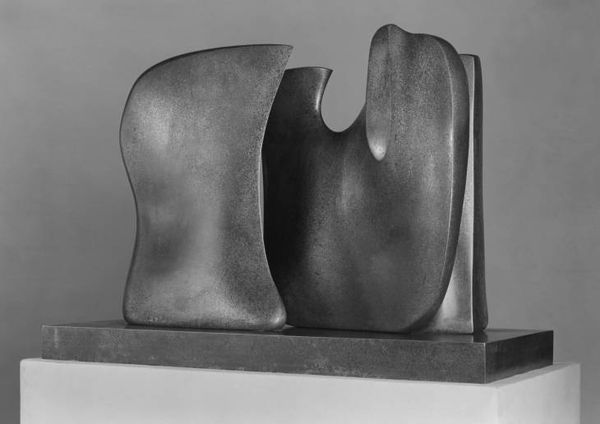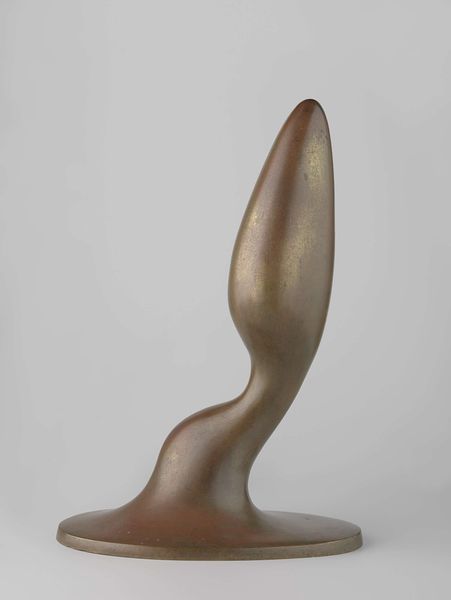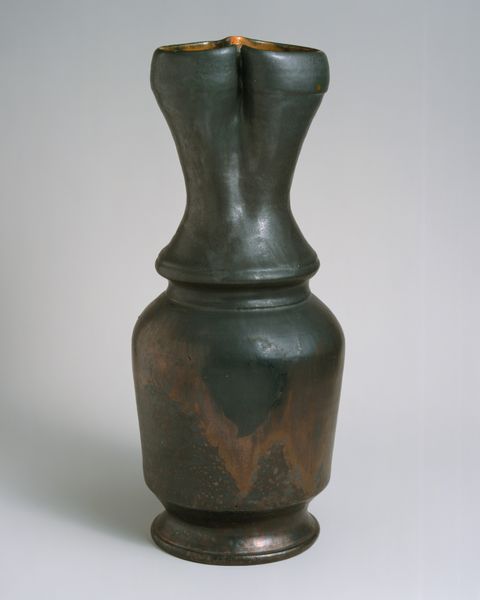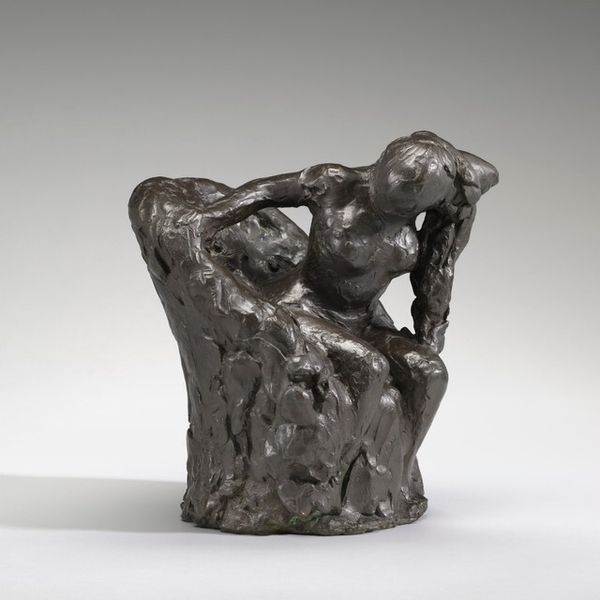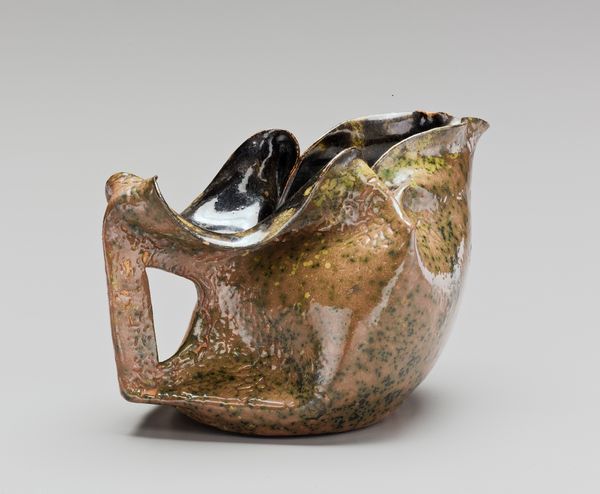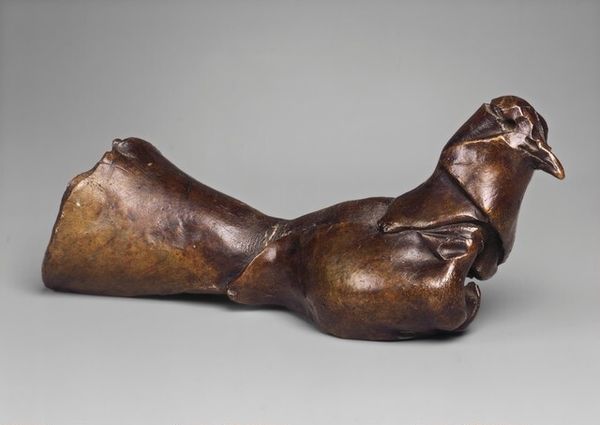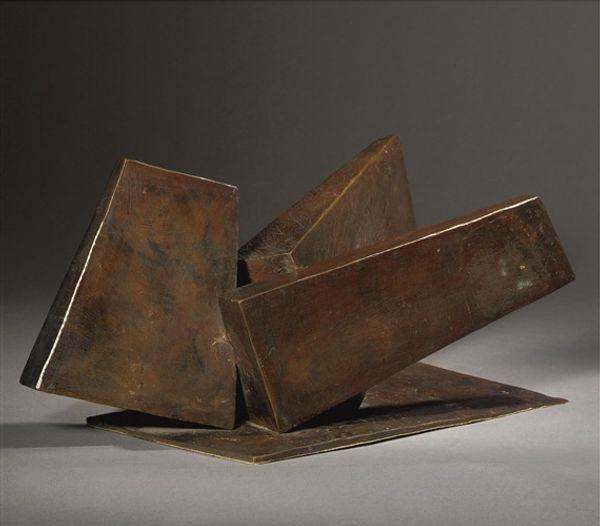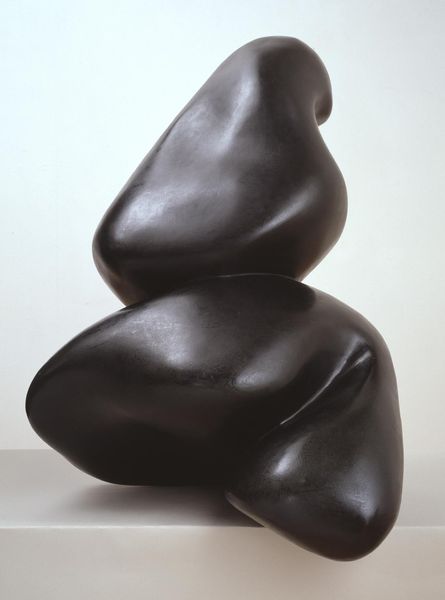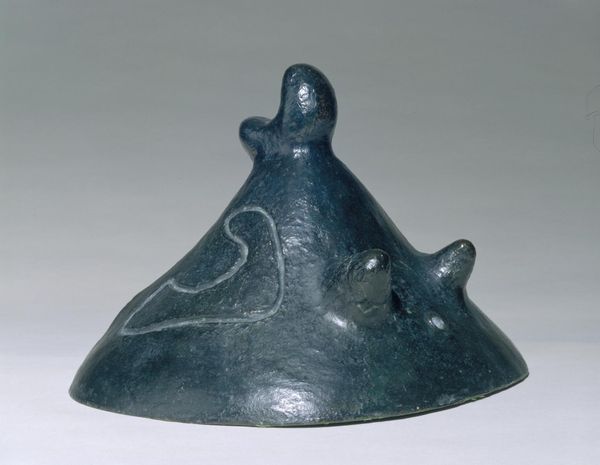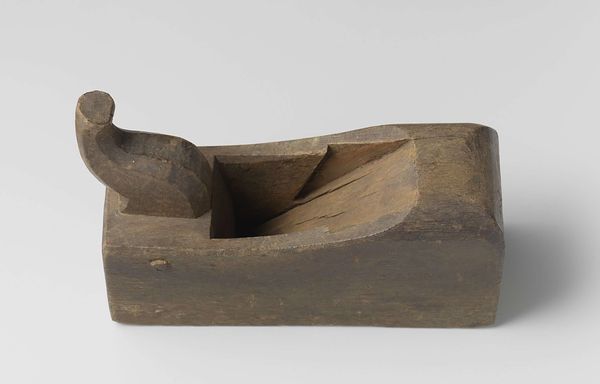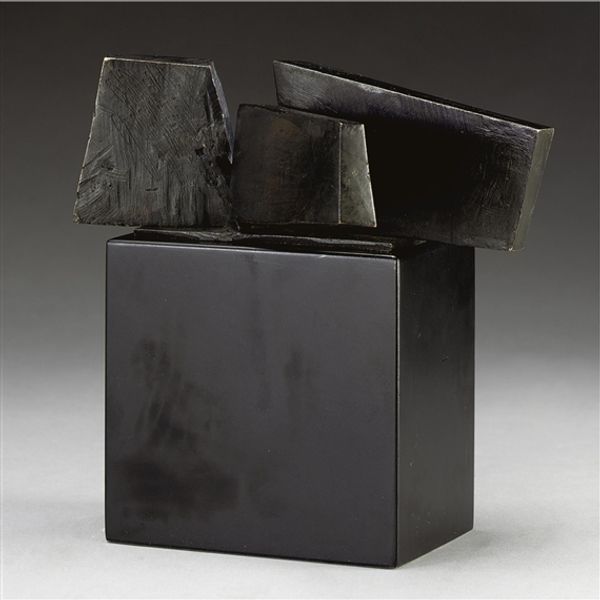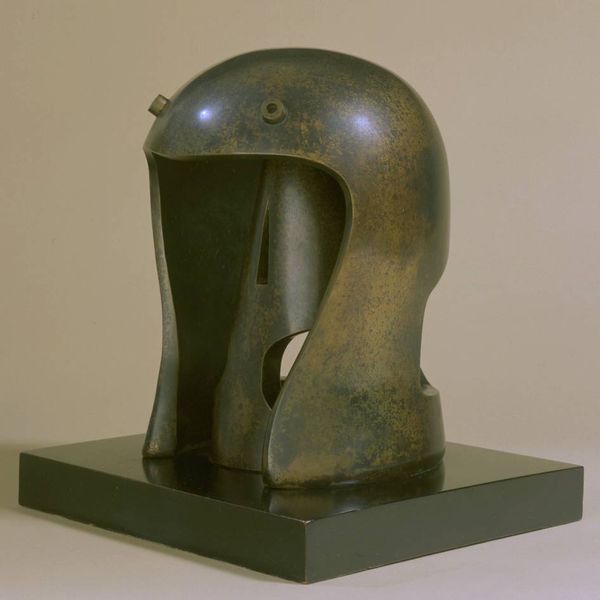
Dimensions: object: 90 x 137 x 125 mm
Copyright: © Succession Marcel Duchamp/ADAGP, Paris and DACS, London 2014 | CC-BY-NC-ND 4.0 DEED, Photo: Tate
Editor: This is Marcel Duchamp's "Female Fig Leaf," from the Tate Collection. I find the bronze to be so tactile, almost like a topographical map. What structural elements stand out to you? Curator: Its essence lies in the reduction to form. The smooth bronze surface, interrupted by the central fissure, invites a tactile reading. Observe how light plays across the curves, highlighting its volumetric presence. Editor: It's a very simplified, almost abstract representation. Curator: Precisely. The piece transcends mere representation. It engages with the interplay of positive and negative space, line and mass, inviting contemplation on form itself. What do you make of its scale? Editor: It’s smaller than I imagined, which makes it more intimate. I see how the form is both suggestive and evasive. Curator: Indeed. Its strength resides in the capacity to provoke thought beyond the immediately visible. A successful study, wouldn't you agree? Editor: Absolutely. I'll never look at Duchamp the same way.
Comments
tate 7 months ago
⋮
http://www.tate.org.uk/art/artworks/duchamp-female-fig-leaf-t07279
Join the conversation
Join millions of artists and users on Artera today and experience the ultimate creative platform.
tate 7 months ago
⋮
In the 1950s, Duchamp made a small number of moulded objects, based on the body’s sexual parts. They exemplify his fascination with sexual ambiguity. Female Fig Leaf was probably based on a mould of the sexual parts of the female mannequin in Duchamp's installation Etant Donnés(Given). The prudish title, Female Fig Leaf, is deliberately ironic. despite its phallic appearance and the fact that the French word ‘dard’ is slang for penis, could also derive from the cast of a vagina. It therefore embodies inside-outside, male-female dualities. Wedge of Chastity is the smallest of the three. The metal ‘wedge’ and the slit-form can also be seen as expressing the union of male and female shapes. Duchamp made the original version of the sculpture in 1954 as a wedding present for his second wife. It is reported that the couple kept it displayed on a bedside table and travelled with it, ‘like a wedding ring’. Gallery label, August 2004
